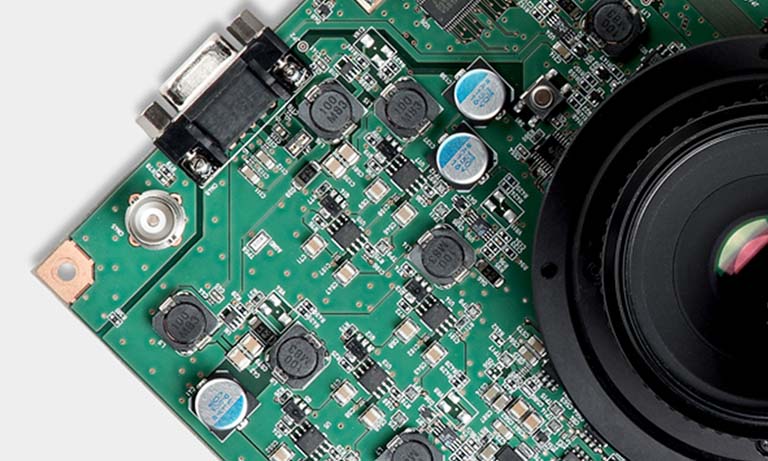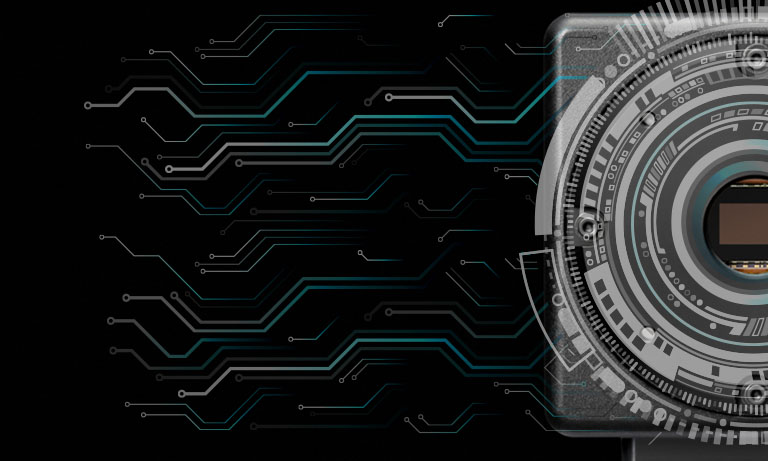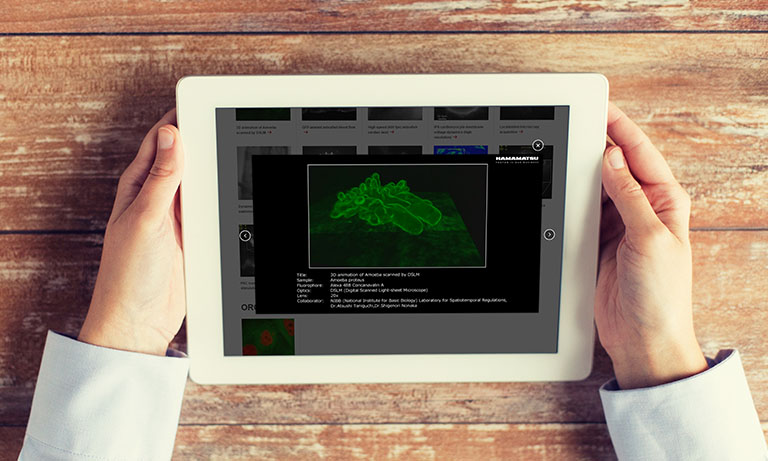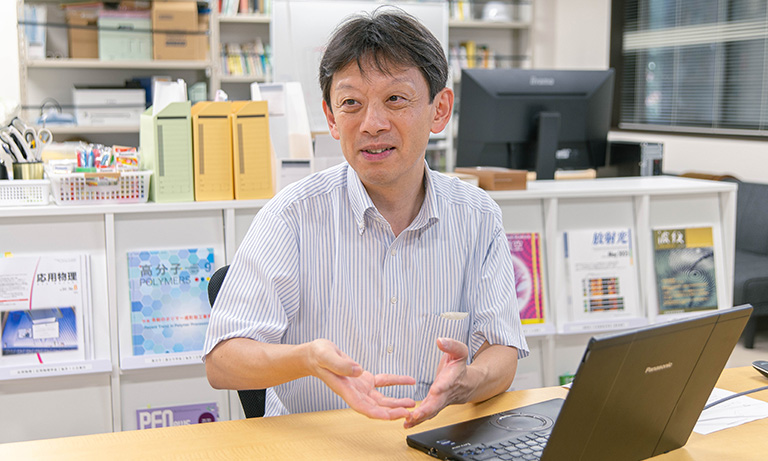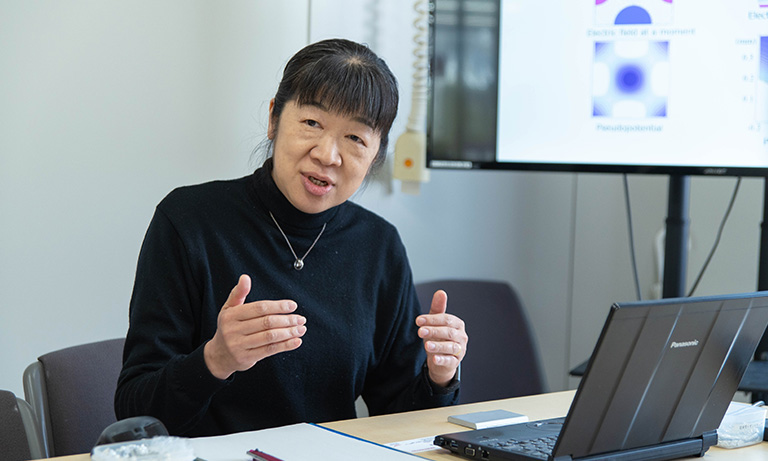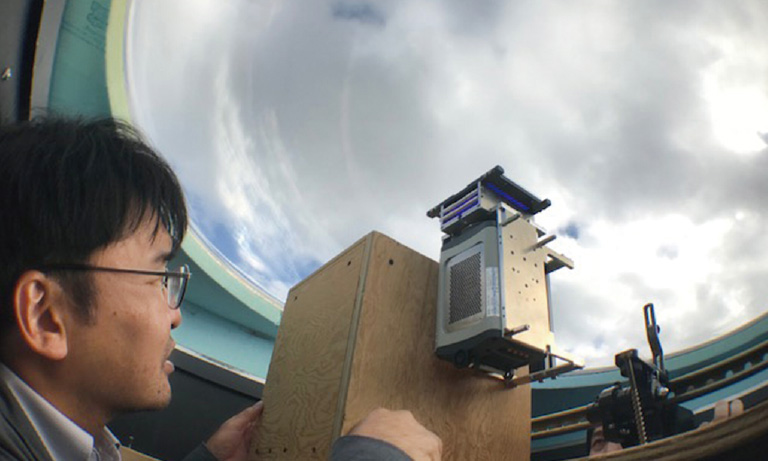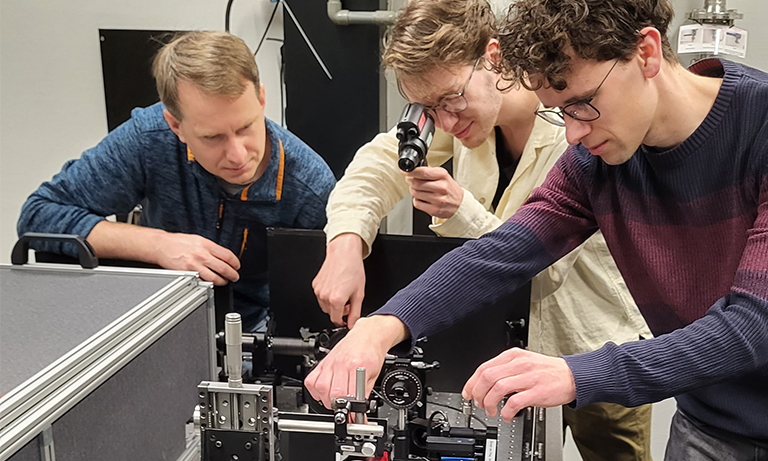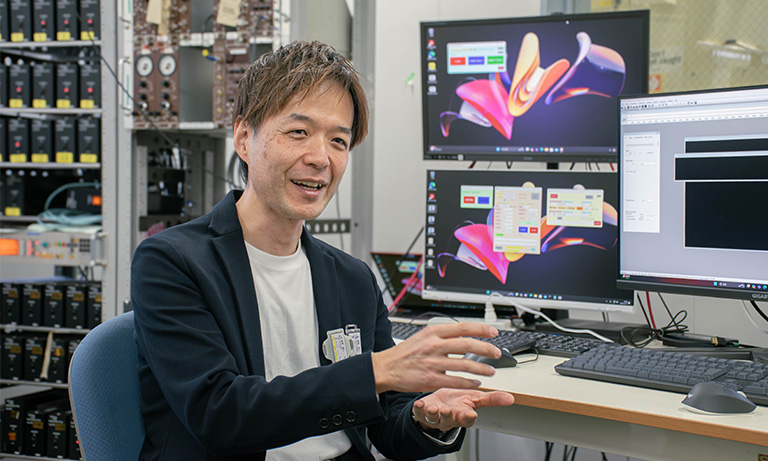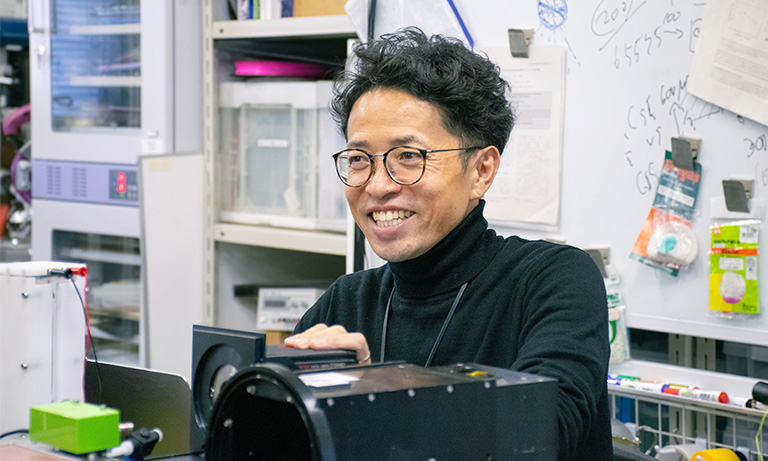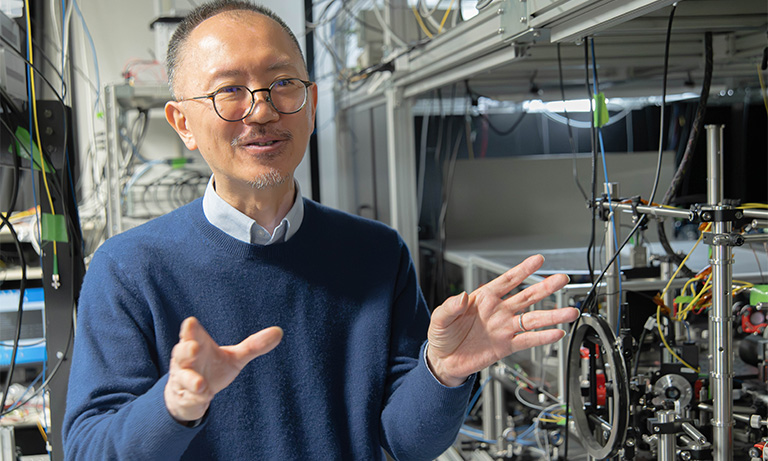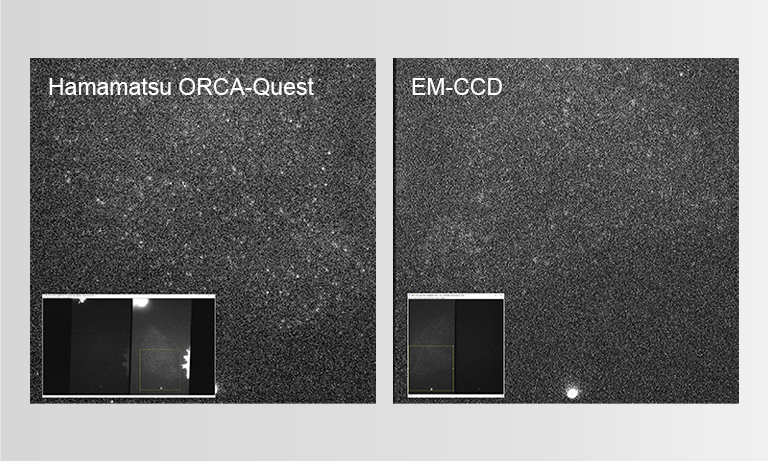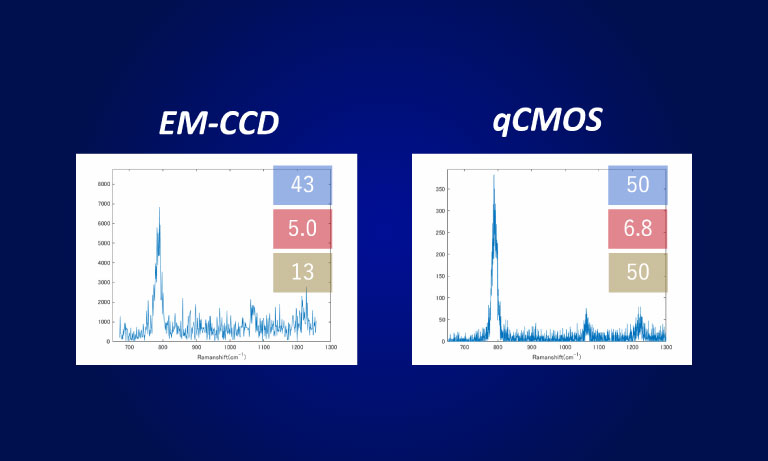United Kingdom (EN)
Select your region or country.
Will I be able to differentiate 1500 molecules from 1475? What's the dynamic range?
THIS GUIDE IS FOR:
Biologists that use, or are interested in using, microscope cameras and don’t speak engineering
THIS GUIDE OFFERS:
Clarity on the relevance of camera specs to biological experimentation
SECTIONS:
- What type of camera is this and why should I care?
- How much resolution? How wide a field of view?
- How fast can I image?
- Will I be able to differentiate 1500 molecules from 1475?
- My samples have very low signal, can this camera accurately image my sample?
LISTED IN SPECIFICATIONS AS:
| Hamamatsu listing | Synonyms used by other vendors |
|---|---|
| Full well capacity | Pixel well depth |
| Full well capacity EM-CCD readout | Shift register well depth, Gain register pixel well depth |
| Dynamic range | |
| A/D conversion | A/D conversion factor, Digitization, Digital output format |
As with many scientific questions, the answer to the seemingly simple question, “Will I be able to differentiate 1500 molecules from 1475,” is not straightforward. It depends on the photon emission properties of the fluorophore, the number of fluorophores per molecule, and the camera. The heart of this question is understanding the detectable signal change that your camera is able to detect for your specific experiment. And to understand detectable signal change, we need to look at full well capacity.
Detectable signal change (DSC) describes sensitivity to change. For the case of a microscope camera, DSC describes the measureable precision of a change in the signal, making total signal acquired the limiting factor. Full well capacity—which defines the maximum amount of signal the camera can detect—is the most important feature and camera noise is of minimal importance.
Back to the question of detecting 1500 molecules versus 1475, the question becomes, “can I detect a 2 % difference?” Using the following equations for DSC and % DSC:
and solving for S:
Our camera would need to be able to have enough full well capacity to capture 2500 electrons before saturating.
Of course, our sample would need to produce enough photons to create that many electrons in the detector in the time allotted by the exposure and the quantum efficiency of the system.
But what if you wanted to detect this 2 % difference while also keeping other features in the image visible (above noise) and non-saturating. For example, if you were trying to image neurons, where the cell bodies are bright, but the dendrites are much dimmer. Now you need to consider the dynamic range (DR) of the camera.
The total DR of the camera is also a function of the full well capacity, but here camera noise is important to consider. Note that DR does not consider the sample, it is only a property of the camera.
DR is defined as the maximum achievable signal divided by the camera noise.
And is sometimes presented in decibels instead of as a ratio:
The maximum achievable signal is determined by the full well capacity—if the full well capacity is 30,000 electrons, then the maximum number of photons you can collect in one image for that pixel is 30,000. Of course, because not every photon is converted into an electron, this reflects only a fraction of the actual number of photons and is described by the Quantum Efficiency (QE) of the camera at that particular wavelength.
And noise is a combination of read noise, dark noise, and shot noise (discussed in greater detail here). Typically, you can calculate dynamic range using the full well capacity and the read noise. For most biological experiments, dark noise is negligible and only affects the dynamic range at exposures longer than five minutes, and at high signal shot noise is also negligible.
Using the ORCAⓇ-Flash4.0 as an example, we divide the full well capacity of 30,000 electrons by the read noise at slow scan, which is 0.9 electrons, to get a dynamic range of 33,000: 1, or 90.4 Db.
Note that for EM-CCDs, when using the EM register dynamic range can be reduced. Once the full well capacity of the EM gain register exceeds the amplified full well capacity of the individual pixel, dynamic range decreases. The net result is a tradeoff between high EM gain and wide dynamic range.
A word about bit depth
It’s important to recognize that bit depth and dynamic range are not synonymous. Full well capacity divided by bit depth establishes the limit of precision for each gray level—it gives the value for how many electrons per gray level (digitizer bit).
For quantitative image analysis and feature classification, high bit depth is essential.
BOTTOM LINE:
- Dynamic range provides an indication of how many different intensity levels the camera can distinguish, but actual detectable signal change depends on the intensity of your samples and the camera.
- If the manufacturer does not list dynamic range, it can be calculated from the full well capacity and read noise.
- In EM-CCDs as EM gain is increased, dynamic range decreases.
NEXT SECTION: My samples have very low signal; can this camera accurately image my sample?
- Confirmation
-
It looks like you're in the . If this is not your location, please select the correct region or country below.
You're headed to Hamamatsu Photonics website for GB (English). If you want to view an other country's site, the optimized information will be provided by selecting options below.
In order to use this website comfortably, we use cookies. For cookie details please see our cookie policy.
- Cookie Policy
-
This website or its third-party tools use cookies, which are necessary to its functioning and required to achieve the purposes illustrated in this cookie policy. By closing the cookie warning banner, scrolling the page, clicking a link or continuing to browse otherwise, you agree to the use of cookies.
Hamamatsu uses cookies in order to enhance your experience on our website and ensure that our website functions.
You can visit this page at any time to learn more about cookies, get the most up to date information on how we use cookies and manage your cookie settings. We will not use cookies for any purpose other than the ones stated, but please note that we reserve the right to update our cookies.
1. What are cookies?
For modern websites to work according to visitor’s expectations, they need to collect certain basic information about visitors. To do this, a site will create small text files which are placed on visitor’s devices (computer or mobile) - these files are known as cookies when you access a website. Cookies are used in order to make websites function and work efficiently. Cookies are uniquely assigned to each visitor and can only be read by a web server in the domain that issued the cookie to the visitor. Cookies cannot be used to run programs or deliver viruses to a visitor’s device.
Cookies do various jobs which make the visitor’s experience of the internet much smoother and more interactive. For instance, cookies are used to remember the visitor’s preferences on sites they visit often, to remember language preference and to help navigate between pages more efficiently. Much, though not all, of the data collected is anonymous, though some of it is designed to detect browsing patterns and approximate geographical location to improve the visitor experience.
Certain type of cookies may require the data subject’s consent before storing them on the computer.
2. What are the different types of cookies?
This website uses two types of cookies:
- First party cookies. For our website, the first party cookies are controlled and maintained by Hamamatsu. No other parties have access to these cookies.
- Third party cookies. These cookies are implemented by organizations outside Hamamatsu. We do not have access to the data in these cookies, but we use these cookies to improve the overall website experience.
3. How do we use cookies?
This website uses cookies for following purposes:
- Certain cookies are necessary for our website to function. These are strictly necessary cookies and are required to enable website access, support navigation or provide relevant content. These cookies direct you to the correct region or country, and support security and ecommerce. Strictly necessary cookies also enforce your privacy preferences. Without these strictly necessary cookies, much of our website will not function.
- Analytics cookies are used to track website usage. This data enables us to improve our website usability, performance and website administration. In our analytics cookies, we do not store any personal identifying information.
- Functionality cookies. These are used to recognize you when you return to our website. This enables us to personalize our content for you, greet you by name and remember your preferences (for example, your choice of language or region).
- These cookies record your visit to our website, the pages you have visited and the links you have followed. We will use this information to make our website and the advertising displayed on it more relevant to your interests. We may also share this information with third parties for this purpose.
Cookies help us help you. Through the use of cookies, we learn what is important to our visitors and we develop and enhance website content and functionality to support your experience. Much of our website can be accessed if cookies are disabled, however certain website functions may not work. And, we believe your current and future visits will be enhanced if cookies are enabled.
4. Which cookies do we use?
There are two ways to manage cookie preferences.
- You can set your cookie preferences on your device or in your browser.
- You can set your cookie preferences at the website level.
If you don’t want to receive cookies, you can modify your browser so that it notifies you when cookies are sent to it or you can refuse cookies altogether. You can also delete cookies that have already been set.
If you wish to restrict or block web browser cookies which are set on your device then you can do this through your browser settings; the Help function within your browser should tell you how. Alternatively, you may wish to visit www.aboutcookies.org, which contains comprehensive information on how to do this on a wide variety of desktop browsers.
5. What are Internet tags and how do we use them with cookies?
Occasionally, we may use internet tags (also known as action tags, single-pixel GIFs, clear GIFs, invisible GIFs and 1-by-1 GIFs) at this site and may deploy these tags/cookies through a third-party advertising partner or a web analytical service partner which may be located and store the respective information (including your IP-address) in a foreign country. These tags/cookies are placed on both online advertisements that bring users to this site and on different pages of this site. We use this technology to measure the visitors' responses to our sites and the effectiveness of our advertising campaigns (including how many times a page is opened and which information is consulted) as well as to evaluate your use of this website. The third-party partner or the web analytical service partner may be able to collect data about visitors to our and other sites because of these internet tags/cookies, may compose reports regarding the website’s activity for us and may provide further services which are related to the use of the website and the internet. They may provide such information to other parties if there is a legal requirement that they do so, or if they hire the other parties to process information on their behalf.
If you would like more information about web tags and cookies associated with on-line advertising or to opt-out of third-party collection of this information, please visit the Network Advertising Initiative website http://www.networkadvertising.org.
6. Analytics and Advertisement Cookies
We use third-party cookies (such as Google Analytics) to track visitors on our website, to get reports about how visitors use the website and to inform, optimize and serve ads based on someone's past visits to our website.
You may opt-out of Google Analytics cookies by the websites provided by Google:
https://tools.google.com/dlpage/gaoptout?hl=en
As provided in this Privacy Policy (Article 5), you can learn more about opt-out cookies by the website provided by Network Advertising Initiative:
http://www.networkadvertising.org
We inform you that in such case you will not be able to wholly use all functions of our website.
Close

